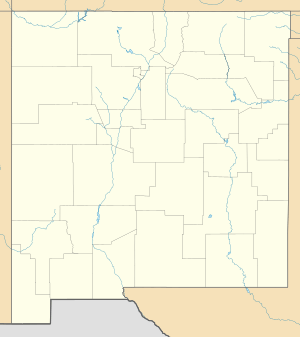Rio Puerco (Rio Chama tributary) facts for kids
Quick facts for kids Rio Puerco de Chama |
|
|---|---|
|
Location of the mouth of the Rio Puerco de Chama in New Mexico
|
|
| Native name | Day p'ohu'u, Nap'otap'o |
| Other name(s) | Rio Coyote |
| Country | United States |
| State | New Mexico |
| County | Rio Arriba |
| Physical characteristics | |
| Main source | Nacimiento Mountains 9,706 ft (2,958 m) 36°04′55″N 106°46′12″W / 36.08194°N 106.77000°W |
| River mouth | Rio Chama 6,144 ft (1,873 m) 36°15′51″N 106°31′24″W / 36.26417°N 106.52333°W |
The Rio Puerco de Chama is a river in the state of New Mexico, United States. It is a smaller river that flows into a larger one. This type of river is called a tributary. The Rio Puerco de Chama is a tributary of the Rio Chama.
Contents
Where the River Starts
The Rio Puerco de Chama begins high up in the Nacimiento Mountains. These mountains are located in New Mexico. The river starts at an elevation of about 9,706 feet (2,958 meters). This is like starting at the top of a very tall building!
The River's Journey
From its mountain source, the Rio Puerco de Chama flows generally towards the northeast. It travels through different landscapes in Rio Arriba County. As it flows, it collects water from smaller streams. These streams also help the river grow.
Joining the Rio Chama
The journey of the Rio Puerco de Chama ends when it meets the Rio Chama. This meeting point is located above Abiquiu Lake. The Rio Chama is itself a tributary of the much larger Rio Grande. So, the water from the Rio Puerco de Chama eventually joins the Rio Grande.
What is a Tributary?
A tributary is a stream or river that flows into a larger stream or river. It does not flow directly into an ocean or a lake. Think of it like a smaller road that joins a main highway. The Rio Puerco de Chama is a good example of a tributary.
Connection to History
The area around the Rio Puerco de Chama has historical importance. It is connected to the Old Spanish Trail (trade route). This was a historic trade route that linked Santa Fe, New Mexico, with Los Angeles, California. It was used by traders and travelers long ago.


